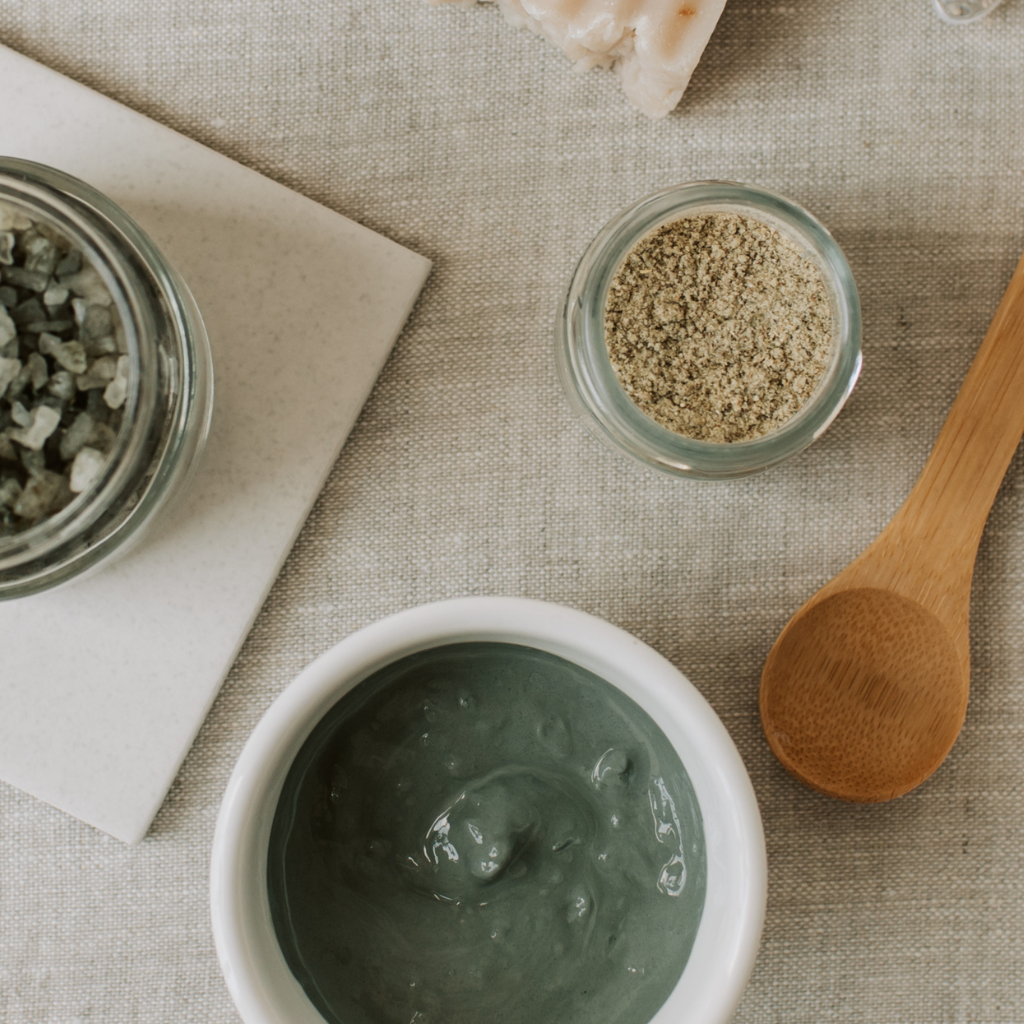
Now that our meal prepping series is complete, we're pulling our focus to what to do after you prep. Likely, you will have plenty of scraps from all that fresh produce. It’s easy to just toss them right into the trash, but think about what happens to them when they leave your home. Once food scraps get into the landfills, they breaks down into methane, which is a greenhouse gas that is harmful to the environment. Instead, you can either repurpose or regrow your scraps, or start a small composting station right in your kitchen. Best of all, by repurposing/regrowing your scraps you are getting a bigger bang for your buck AND saving future money (less food to buy on future grocery store trips)!

REPURPOSE / REGROW
Did you know there are several vegetables that you can easily regrow right in your kitchen? And there are others you can start to regrow on your countertop and then transplant into a small garden if you have space.
For plants like green onions, spring onions, fennel, lemongrass, leeks, etc., you just need to spare the root (if still attached) plus one-half inch section of the plant. Just drop it into a clean glass with water, change water daily, and wait until you see some growth. Once the growth is there, trim off the tops and enjoy as needed.
Some plants will require a few months before you will have enough to harvest. These include celery, cabbage, leafy lettuces, ginger, onions, and garlic. But imagine having these basics on hand any-time without having to go back to the market. Sounds like heaven!

There are so many more you can regrow, including potatoes, onions, avocados, even pineapples! Definitely check out our Pinterest board for tips.
Mushrooms are next on our list to try and regrow. Simply pop off the tops, and plant the stalks into a compost/soil mixture with only the top exposed. New growth should happen soon and you can just simply harvest and repeat.
What veggies do you repurpose and regrow? Share with us in the comments below!
DIY VEGGIE BROTH
After meal prepping, save all your scraps in an air-tight container (like this one) in the freezer. Once you have enough saved up, it’s time to make your own Veggie Broth. Not only does this cut down on waste, but it also saves you money! It’s so easy to do:
- Add all fresh and clean scraps to a large pot
- Add 10-12 cups of water (depending on how many scraps you have)
- Add in your choice of spices for flavoring (salt, pepper, garlic, bay leaves, basil, etc.)
- Bring to a simmer and cook for 40 min to an hour, stirring occasionally
- Once broth is colorful and fragrant, remove from heat
- Remove scraps and strain broth into portioned containers (we love these glass jars)
- Use immediately or freeze

SCRAPS = TREATS
Some scraps can be enjoyed by natural wildlife or your family pets! Deer love certain types of fruits and veggies so you can toss your scraps over the fence for them to enjoy (they love strawberry tops, old corn cobs, and melon rinds)! Or, if your pups enjoy stuff like carrots and sweet potatoes, feel free to toss them a scrap or two. Just be sure to google before you try something new with them. There are a lot of “table” foods that can be harmful to dogs.
If you’re unable to utilize scraps for yourself, there might be some local farms or a composting co-op that could use them for their goats or chickens. Give a few a call, it wouldn’t hurt. By giving your scraps to them, you’re ensuring they will be repurposed and not contribute more to the buildup of greenhouse gasses in our atmosphere.

QUICK OVERVIEW OF COMPOSTING
Lastly, a small composting station in your kitchen is a great way to repurpose any leftover scraps and foods you may have. Not only are you preventing more waste from heading to the landfills, but you are creating a nutrient-rich soil for your own home garden! Before you start, there are a few things to know. Below is a very brief overview. If you’re truly interested in something like this, definitely check out some of the articles easily found on Pinterest. It can be a little overwhelming at first, but just take it one step at a time.
Step 1. Choose your compost station
You can choose to have a small station in your kitchen (keep it in a corner or under your sink) and use the soil to add to a small home garden. Or, you can go big and create larger composting bins for your backyard. Whichever you choose, be sure to fully research and plan before starting.
If you choose a small kitchen composting bin, check out these simple supplies you can get on Amazon.
Step 2. Educate yourself on what you CAN and CANNOT compost
It’s very important, for the vitality of your composting station, to educate yourself on what you can and cannot compost. Here is a basic list to keep handy:
“Greens” (Nitrogen-rich materials)
Fruit and Veggie Scraps
Coffee Grounds and Filter Paper
Green (fresh) Leaves or Shrub Prunings
Animal Manure (from herbivores only - rabbits, horses, etc.)
House Plants
Old Flower Bouquets
Human and Animal Hair
Nail clippings
Eggshells
“Browns” (Carbon Materials)
Aged Hay
Dry Leaves
Sawdust (untreated wood only)
Newspaper (non-soiled)
Cardboard Egg Cartons
Wrapping Paper
Cardboard Rolls (from paper towels and toilet paper)
Shredded Paper
Staying true to our ultimate goal, we work hard here at Urban Oreganics to ensure all our products and packaging can be repurposed or composted. Check out all our compostable products here.

Step 3. Set up your station
Generally, you need to try and “shred” or tear up the pieces before adding to your compost pile (or bin). This will help speed up the process. After adding everything, you will wet the pile thoroughly. Keep in mind, you will need to turn the pile often so that oxygen can get to all parts of the pile. Within 2 months, you should have usable soil ready for your garden.
There are a lot of troubleshooting tips and tricks found on Pinterest. Check out some of our faves there.
We would love to hear about your experience minimizing your kitchen food/scraps waste by composting! Leave your fave tips below so we can all learn.















Comments
I’m finally trying my hand at veggie stock with my market scraps. Thanks for the idea (and recipe!)!